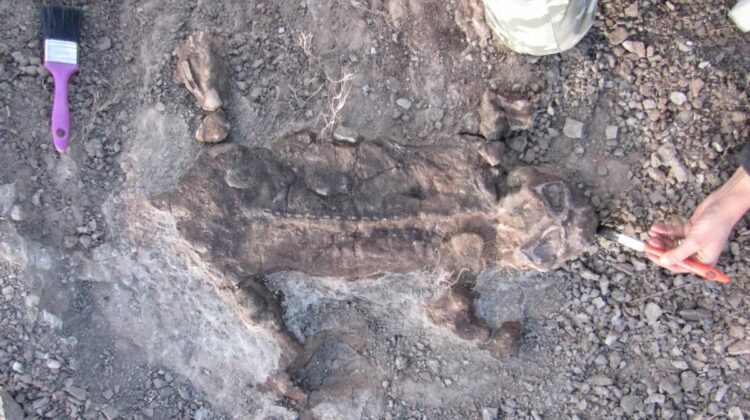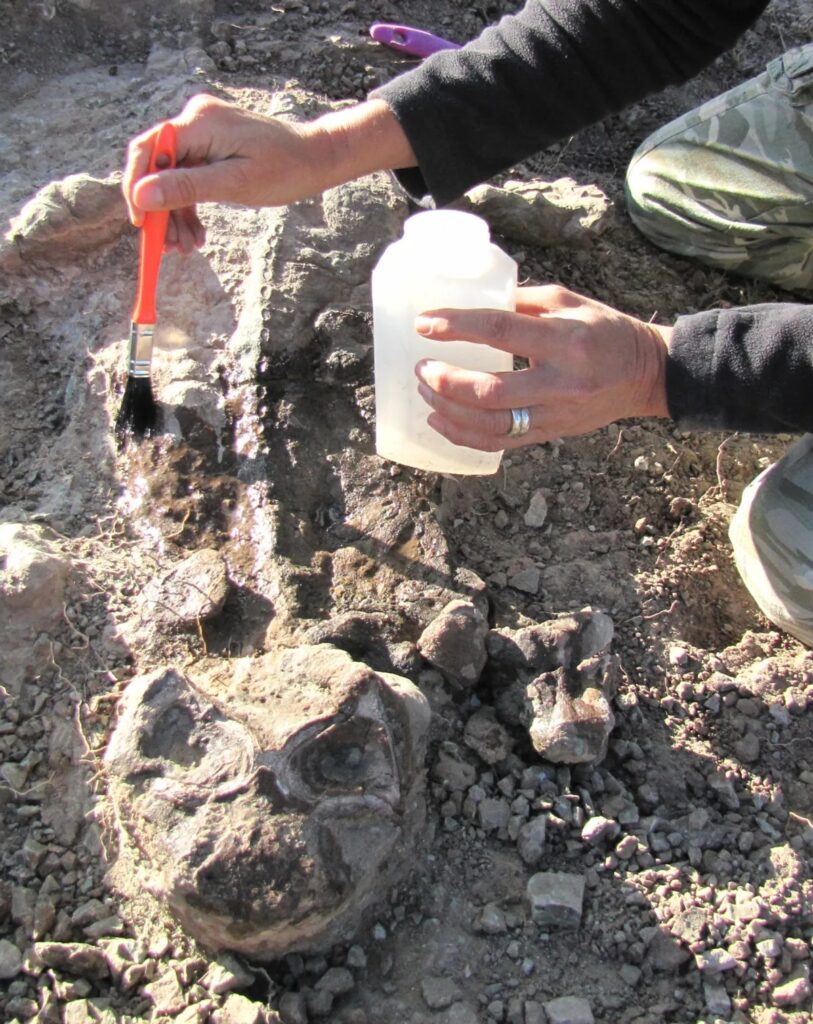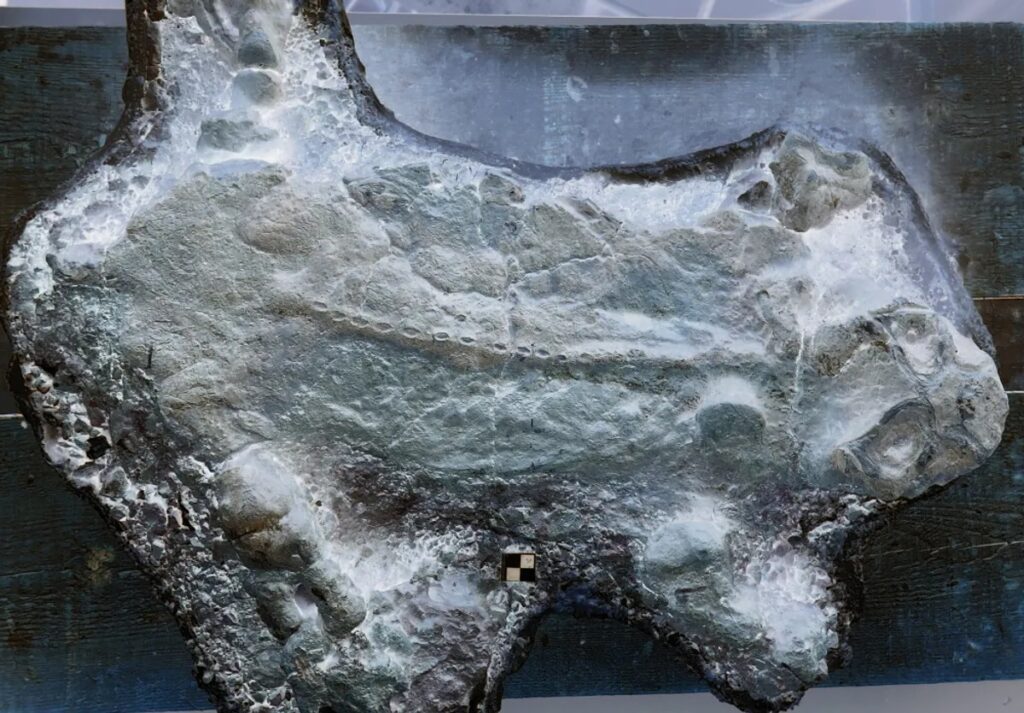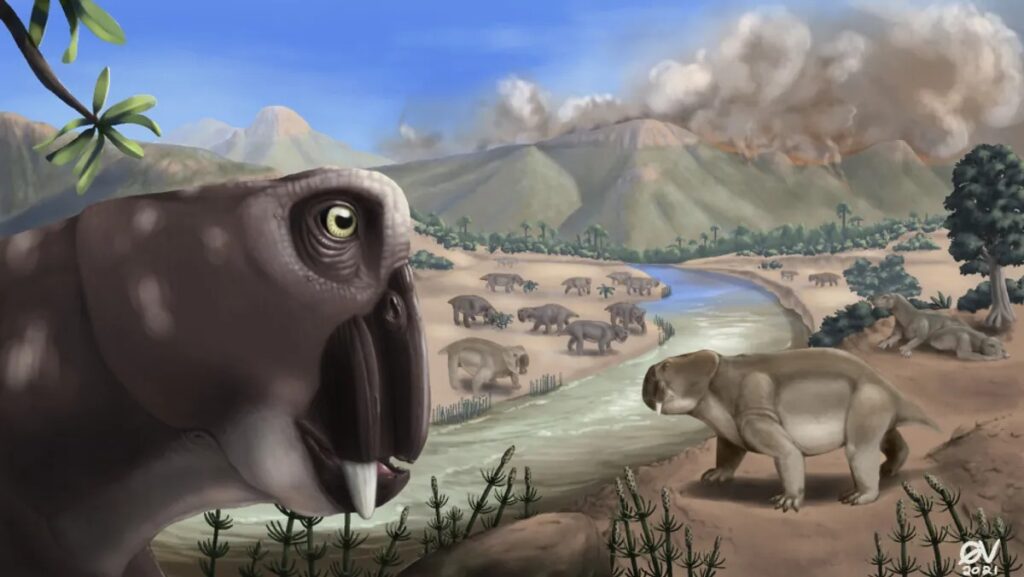
The basin revealed several specimens with their skin remarkably intact.
Lystrosaurus was spotted in a couple sequences in Jurassic World Dominion (including a deleted one in which it chomps the head off an Oviraptor). While the silver screen may be the last place we’ll ever see such an animal alive and well, mummified specimens discovered in South Africa have revealed incredible detail in their skin.
The extraordinarily well preserved Lystrosaurus mummies were discovered in South Africa’s southern Karoo Basin and are thought to date from the early Triassic period, roughly 251 million years ago, when this region had harsh dry weather.
“The site where these fossils are located represents a uniquely fossil-rich accumulation during the immediate aftermath of the end-Permian mass extinction event,” Dr Pia Viglietti, a palaeontologist and researcher with the Field Museum of Natural History who co-authored a paper about the Lystrosaurus mummy discoveries in Palaeogeography, Palaeoclimatology, Palaeoecology, told IFLScience.

“This level of preservation is uncommon among South African fossils from the Karoo Basin.” The texture of the skin impression “confirms notions that Lystrosaurus (an early mammal relative known as a synapsid) did not have scaly bodies like reptiles or other extremely early dinosaur and crocodile relatives living at the same time,” stated Viglietti.
“Many have believed that synapsids possessed a thick “hide” similar to hippos or rhinos, and the skin’s slightly “pustular” texture, as described in the research, is very reminiscent of this.”

According to Viglietti, indications contained within the sediment and the manner in which these animals were committed to the fossil record show that the early Triassic was experiencing variable weather when they were alive. This frequently meant extremely dry, arid circumstances, which is likely to have contributed to these animals’ deaths as they starved to death.
Histological examinations of the Karoo specimens indicate that they were juveniles and subadults, indicating that the conditions were reducing life expectancy. While it’s possible they adapted to attain sexual maturity at a younger age to mitigate this, it appears that it wasn’t enough in the end, since their presence in the stratigraphic record here goes off abruptly.

While Viglietti and colleagues’ paper is being proofed, she plans to continue researching how ancient species dealt, or failed to cope, with extreme weather and extinction events.
“I’m curious to learn more about mass extinction recovery because these data illustrate how long it takes to recover from a mass extinction event.” For years, many workers in the Karoo anticipated that recovery would be relatively quick following this event, but this site shows that even Lystrosaurus was struggling in the new unpredictable world of the early Triassic,” Viglietti told IFLScience.

Leave a Reply